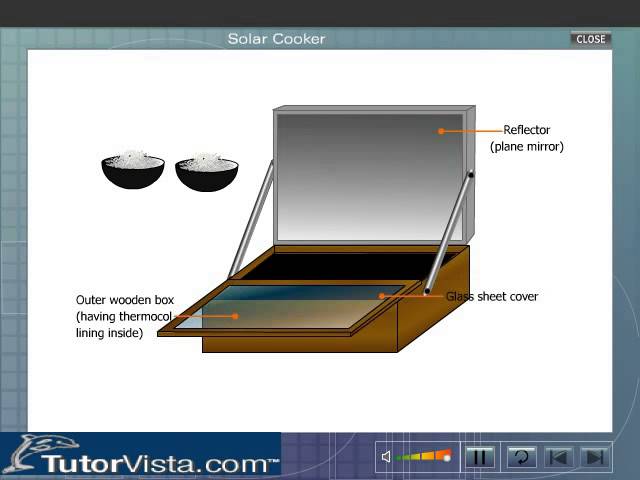Embrace the power of the sun with solar cookers, a sustainable solution to your daily cooking needs.
Solar cooking represents a leap towards sustainable living, harnessing the abundant and free energy provided by the sun. Whether you’re an outdoor enthusiast, a proponent of green energy, or just curious about eco-friendly cooking, understanding the components of a solar cooker is key to optimizing its use and efficiency. Here, we’ll break down the essential parts that make solar cookers a prime choice for environmentally-conscious cooks everywhere.
The Key Components of a Solar Cooker
While designs may vary, the fundamental components of a solar cooker remain consistent across most models. These components contribute to the cooker’s ability to convert sunlight into thermal energy, which is then used to cook food or boil water.
- Reflective Surface
- Absorption Surface/Area
- Insulation
- Cooking Pot or Tray
- Transparent Cover or Glazing
- Support Structure and Adjustment Mechanisms
1. Reflective Surface
The reflective surface is one of the most prominent features of a solar cooker. Typically made from polished metal or a mirror-like material, it focuses and directs sunlight onto a central area where the cooking takes place. The efficiency of a solar cooker heavily depends on the quality and positioning of the reflective surfaces.
2. Absorption Surface/area
The absorption surface, usually dark in color to absorb maximum sunlight, converts the solar energy into heat. This component is crucial as it determines how effectively the cooker can capture and retain heat.
3. Insulation
Insulation is essential in preventing heat loss. Adequate insulation ensures that once the heat is absorbed by the cooker, it remains trapped, creating a more effective cooking environment. Materials often used for insulation include foam, fiberglass, or even natural materials like wool.
4. Cooking Pot Or Tray
The cooking pot or tray is where the food is placed. In solar cookers, it is essential to choose a pot that is conducive to absorbing heat—generally blackened pots or pans are preferred.
5. Transparent Cover Or Glazing
A transparent cover, also referred to as glazing, serves a dual purpose in solar cookers. It allows sunlight to enter the cooker while also acting as a barrier to keep the heat inside. Materials such as glass or high-temperature clear plastics are commonly used in its construction.
6. Support Structure And Adjustment Mechanisms
The support structure provides stability to the solar cooker, while adjustment mechanisms enable the user to orient the cooker towards the sun effectively, maximizing sunlight exposure throughout the day.

Credit: www.sciencedirect.com
Table: Solar Cooker Components and Materials
| Component | Function | Common Materials |
|---|---|---|
| Reflective Surface | Focuses and concentrates sunlight | Polished metal, mirror |
| Absorption Surface | Converts solar energy into heat | Dark-colored materials |
| Insulation | Prevents heat loss | Foam, fiberglass, wool |
| Cooking Pot/Tray | Holds food to be cooked | Blackened pots or pans |
| Transparent Cover/Glazing | Lets light in and retains heat | Glass, clear high-temperature plastics |
| Support Structure and Adjustment Mechanisms | Provides stability and sun orientation | Metal framework, pivot joints |
Frequently Asked Questions Of What Are The Main Components Of A Solar Cooker?
What Are Solar Cooker Key Components?
Solar cookers primarily consist of a reflector, cooking pot, insulation material, and a transparent cover to trap heat.
How Does A Solar Cooker Function?
A solar cooker works by concentrating sunlight onto a cooking pot using a reflective surface, trapping heat to cook food efficiently.
Can You Cook Anything In A Solar Cooker?
Yes, a solar cooker can cook a variety of foods, though cooking times may be longer compared to conventional methods.
What Materials Are Used In Solar Cookers?
Solar cookers are often made from materials like aluminum, glass, steel, and insulating fabrics to optimize heat absorption and retention.
Conclusion
Understanding the components that make up a solar cooker is the first step in harnessing the sun’s power for your cooking needs. By familiarizing yourself with these elements, you can make informed decisions when selecting, using, or even building your own solar cooker. Not only does solar cooking offer an environmentally friendly alternative to traditional methods, but it also provides a unique opportunity to cook using a renewable energy source—the sun.

